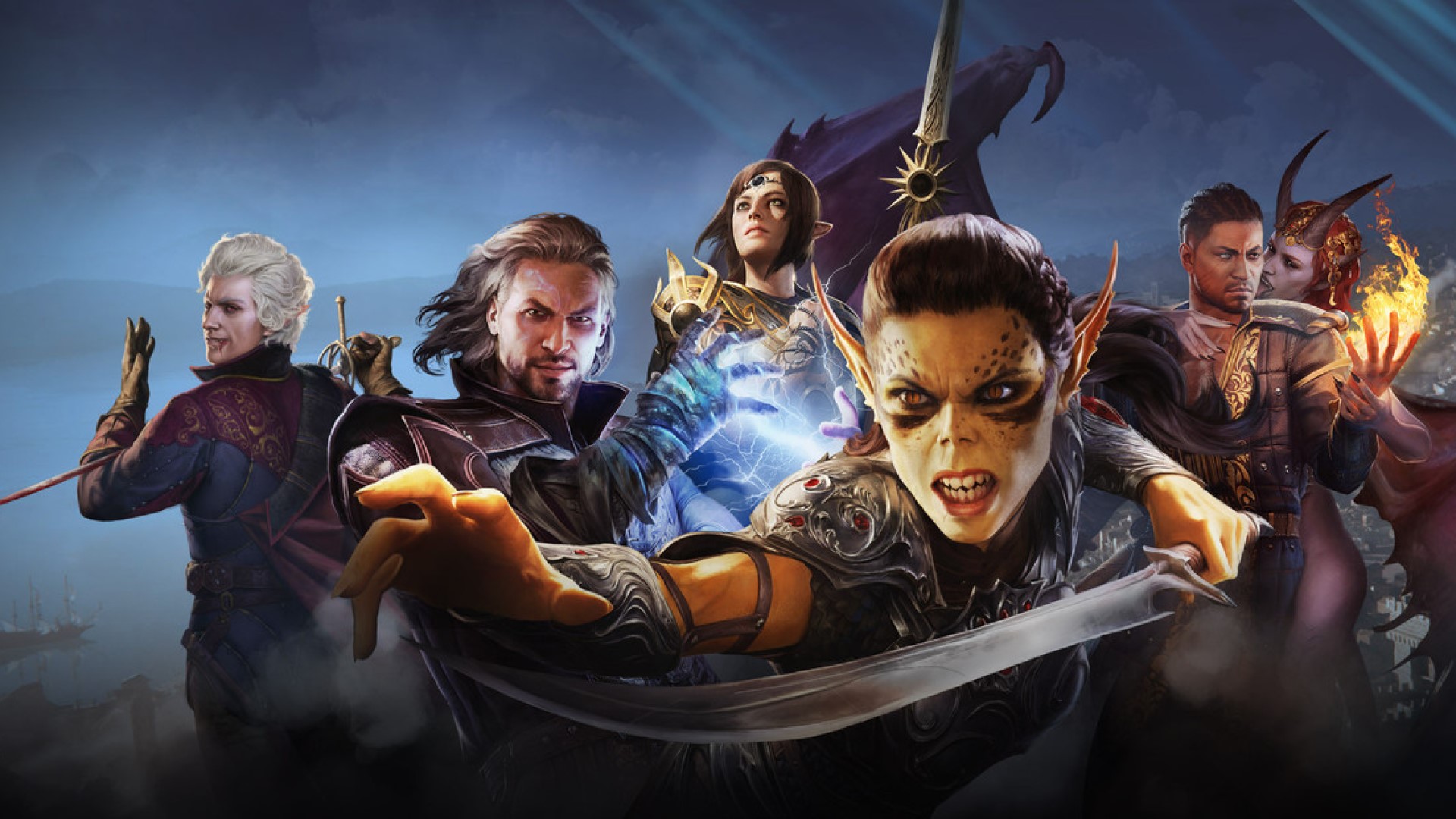
Baldur’s Gate 3 is finally here, and those looking to dive into the world of the Forgotten Realms for the first time might be wondering which class they should pick for their first character.
The answer isn’t an easy one: whether you’re a complete beginner who wants a simpler first playthrough, an existing Dungeons & Dragons enthusiast, or a seasoned veteran of the other Baldur’s Gate games, not only is there a class out there for you, but there’s plenty to spare too, as developer Larian seems to have jammed nearly an entire Player’s Handbook into the game.
Over the course of the game, you’ll get experience with lots of different classes as your party can hold up to four people, with you joined by a mix of different companions. Let’s be honest though, you never forget your first character. Below are our top five picks for five very different types of gamer, from old-school TTRPG fans to those who simply love a good meme build.
Baldur's Gate 3 best class - which one should you pick?
Easy mode: Fighter
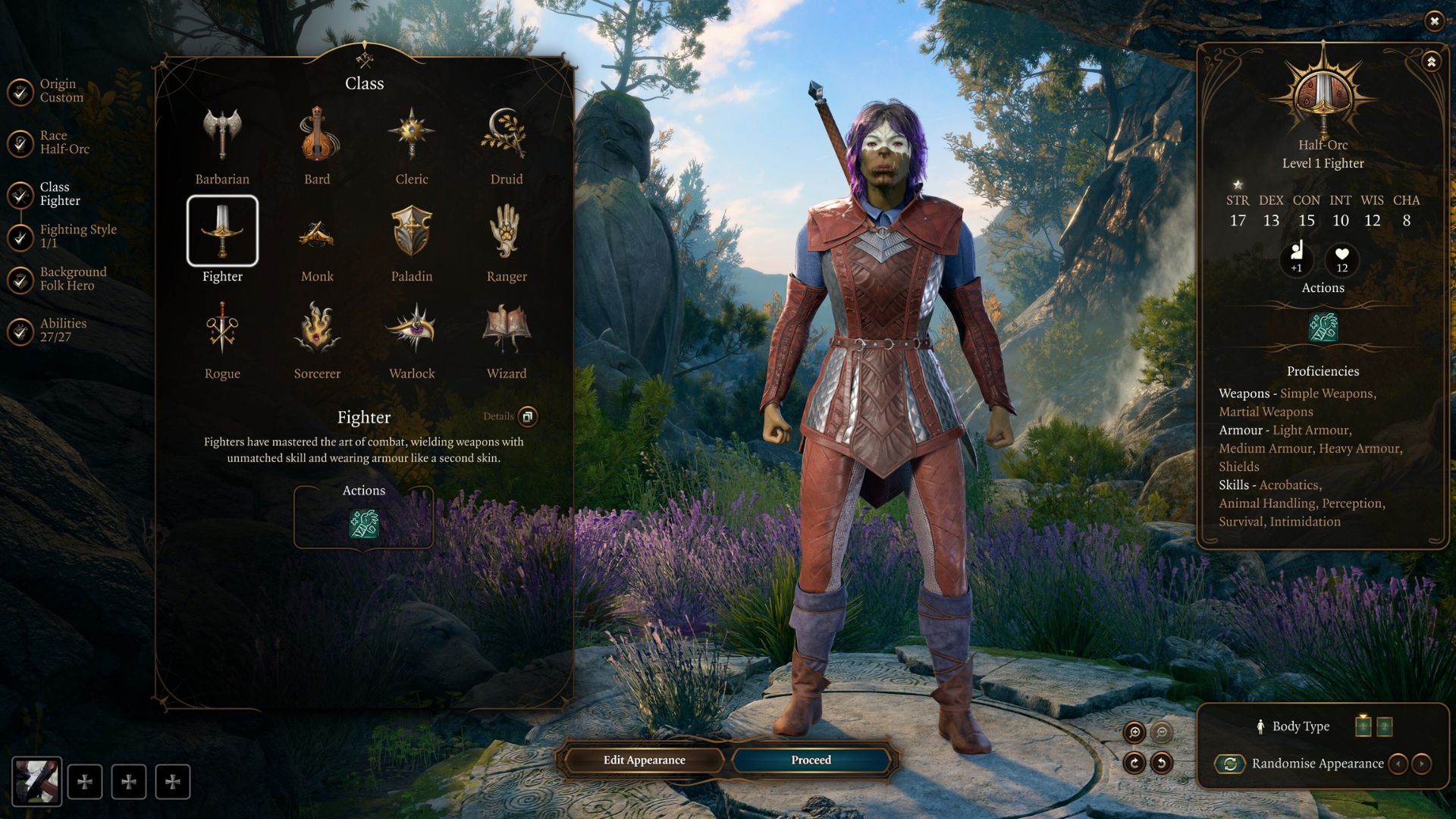
As basic as things get in such a complex game, the humble Fighter is the class to learn the ropes with in Baldur’s Gate 3, and one of the more survivable classes in the game. Much like on the tabletop, Fighters do one thing, and one thing well: fight.
Excelling at combat, Fighters are easy to pick up and play and more likely to survive encounters than most. You’re proficient with all armor and weapons from the get-go, so you can pair medium or heavy armor, and shields, with a fighter’s naturally high hit points to ensure a good degree of survivability. Fighters’ Second Wind ability, which allows you to regain health as a bonus action, also means you’re tough to put down.
However, just because Fighters are an easy class to start with, doesn’t mean you’re lacking any meaningful choices during your playthrough. You can go for either Strength or Dexterity as your main attack stat, with Fighters being equally suited to shooting arrows as they are swinging battleaxes. At Level 3, you get to choose a subclass, specialising in a particular style of play. While some beginner players might want to keep things simple with the Champion, which increases your likelihood of scoring a critical hit, you also have the option of learning some spells by choosing Eldritch Knight, the perfect way to acquaint yourself with the mechanics of spellcasting.
Hard mode: Wizard
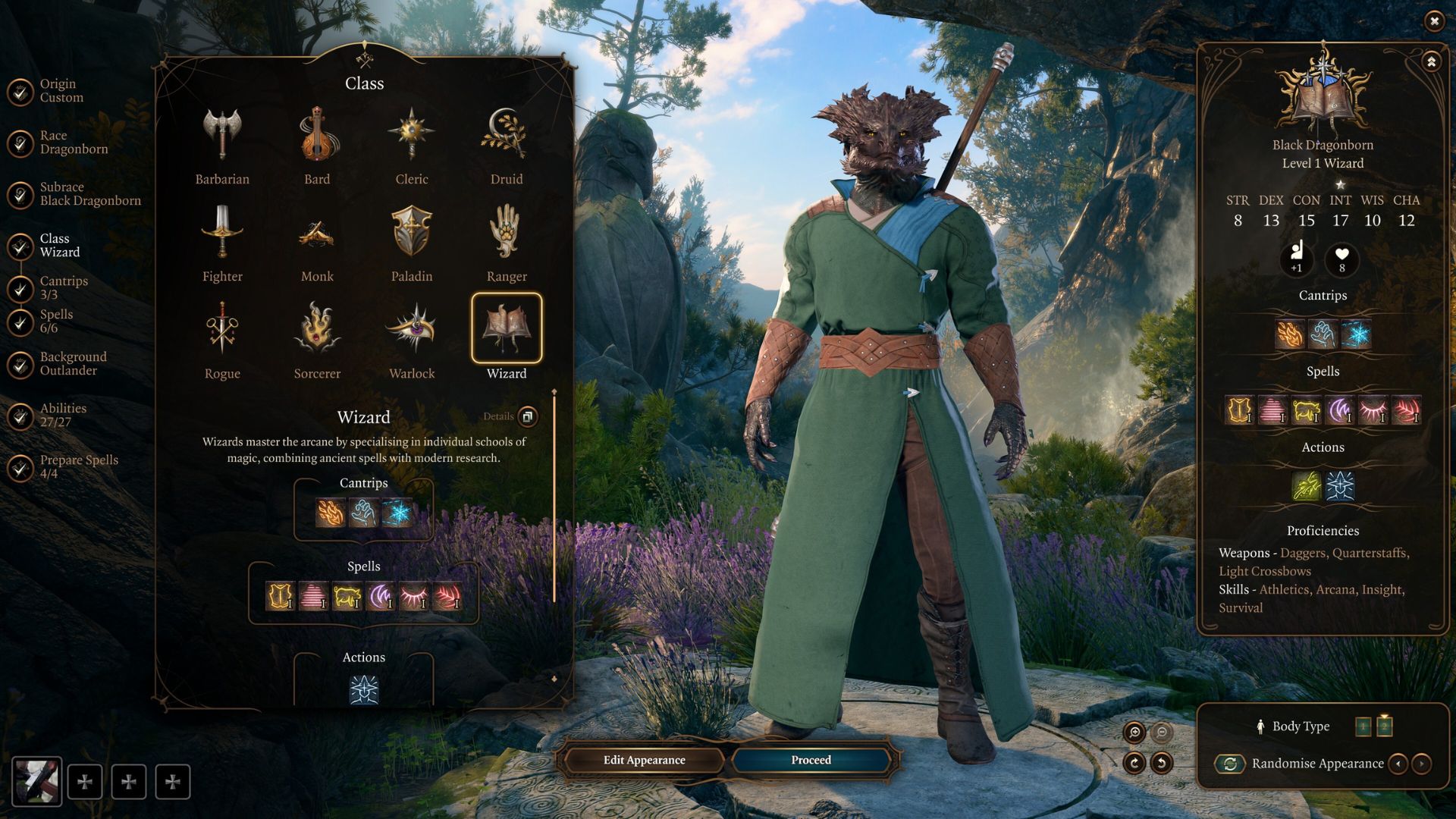
More seasoned players, either of previous Baldur’s Gate games or tabletop Dungeons & Dragons, might prefer a playthrough with lots of complex options available and lower health, to make things more challenging. If this sounds like you, your ideal Baldur’s Gate 3 class could be the Wizard.
As the name suggests, Wizards are spellcasters. Whereas Fighters are very simple to play, Wizard players get to run the gamut of a very large spell list, making every move, action and bonus action a calculated choice. Every magic spell you cast burns up a precious Spell Slot, a finite resource representing a magic-user’s well of spellcasting energy. Once you’re out of slots, you can’t cast anymore, so not only are you deciding which spell to cast, you’re also weighing up whether each action, or bonus action, is worth expending a resource.
In the full game, the Wizard also gets a massive eight subclasses to choose from at Level 3, ranging from the DPS-focused Evocation subclass to the undead-themed Necromancy. It’s a far cry from most classes’ choice of three different specialisations, and new players might easily feel overwhelmed.
All this makes playing the game a much more cerebral experience than the hack-and-slash playstyle a Fighter can offer. Just as Fighters are tough to bring down, Wizards are low on HP and don’t wear armor. If you’re up against a trio of goblins, should you use your action to Disengage and run away safely, sacrificing the opportunity to cast a powerful spell, or burn a slot and try to blow them away with Thunderwave? Choices, choices.
Grognard: Rogue
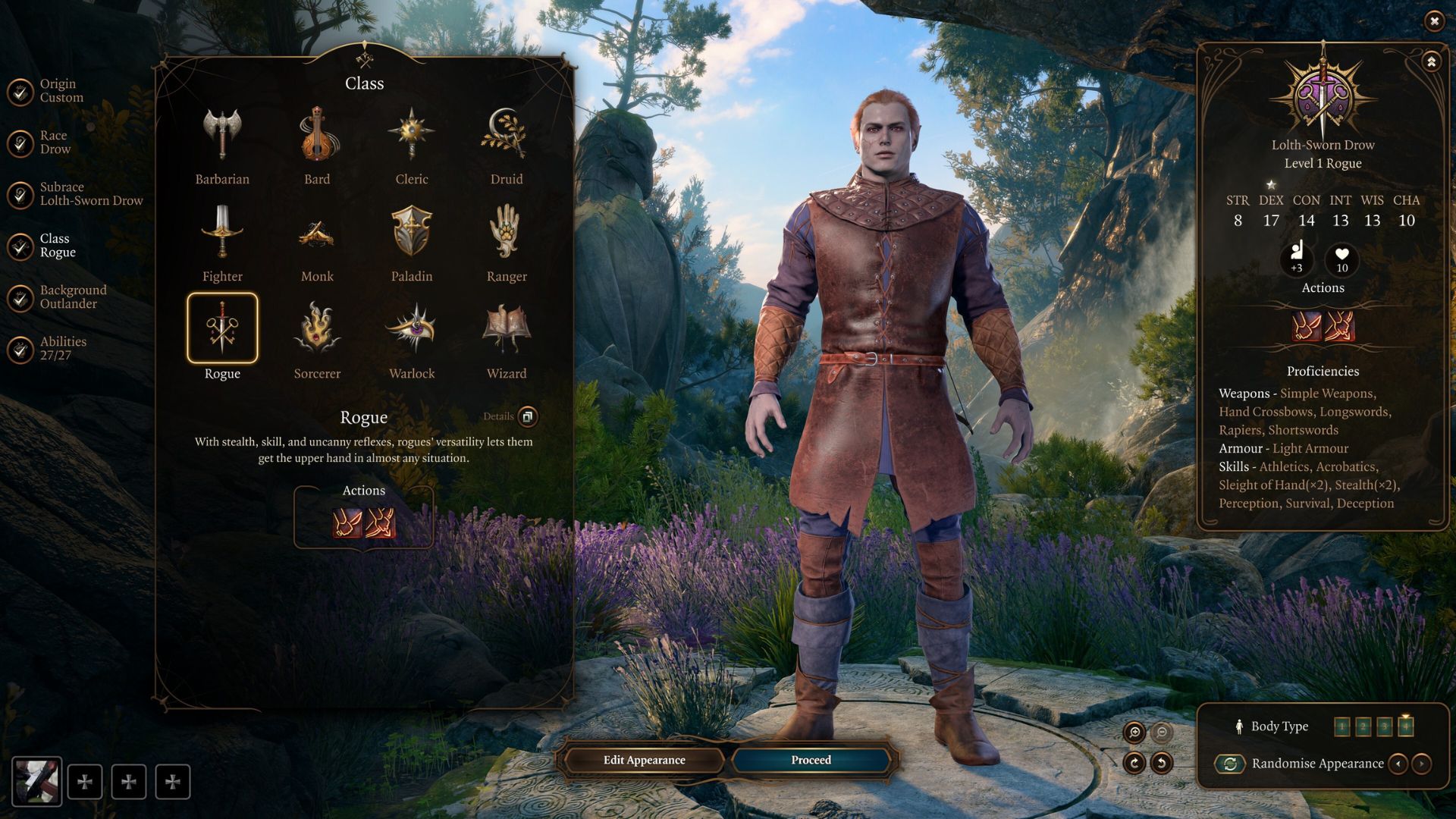
Some people will be logging on to Baldur’s Gate 3 not because they were fans of the original two games, but because they first fell in love with the system through the TTRPG. For players who cut their teeth on the tabletop, Baldur’s Gate 3 represents the next best thing to playing in a world of imagination, with an engine they’re familiar with. If you’re looking for an old-school dungeoneering experience, the Baldur’s Gate 3 class you should be playing is the Rogue.
Rogues are the quintessential D&D class, ideally suited for disabling traps, using the Sleight of Hand skill to pickpocket, and getting the drop on opponents using Sneak Attack, which can be used every round without expending a resource. A D8 Hit Die and a lack of Medium or Heavy Armor proficiency means your AC and HP won’t be particularly high, so skilful play will be needed to navigate dungeons like the early-game goblin camp unscathed.
While those who love their characters in black hoods and greasepaint might prefer the Assassin subclass, for a real old-school vibe there’s only one choice: Thief. Rogues used to all be called Thieves back in the 80s, a catch-all name for stealthy treasure hunter, and the Baldur’s Gate 3 version comes with a flavorful, powerful ability. Fast Hands allows you to take a second bonus action on your turn, allowing the rogue to Hide, Dash, Disengage, or even attack a second or third time in one round. Move, hide, trigger sneak attack and hide again, all in one turn - it’s quietly broken, and bags of fun to play.
Meme build: Barbarian
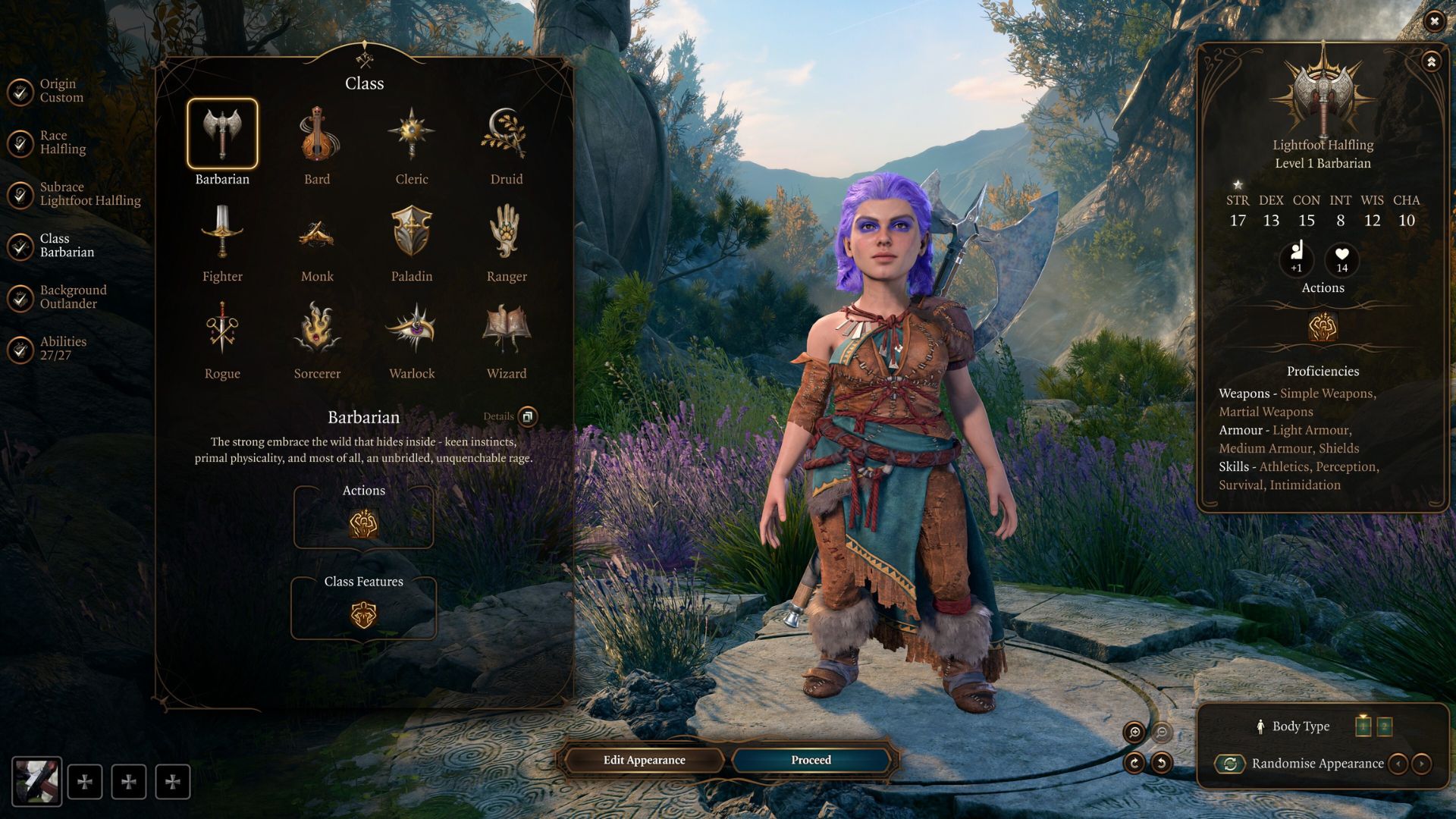
If you love making life difficult for yourself and chuckling at your ridiculous character, the halfling or gnome Barbarian is the build for you. There’s no sight that instils terror in a hobgoblin’s heart - or its knees - than a three-foot-tall barbarian bearing down on them with a longsword.
While it might be a ton of fun to see characters negotiating with Bilbo Baggins festooned with warpaint during cutscenes, Barbarians are still rip-roaring fun to play. Halflings make a fine race for them, too: with advantage on saving throws against being frightened, +2 Dexterity to compensate for a barbarian’s lack of armor, and their Lucky feat allows them to negate critical misses. When you’re swinging your sword several times in a turn, those rerolls add up fast.
While halflings only get 7.5m racial speed in comparison with a medium human’s 9m, the Wildheart Barbarian subclass allows for extra movement using the Eagle Heart and Elk Heart abilities. Motor around the battlefield on your little legs, axe in each hand, as the tiny Tasmanian devil of death you’ve always dreamed of being.
Powergamer: Bard
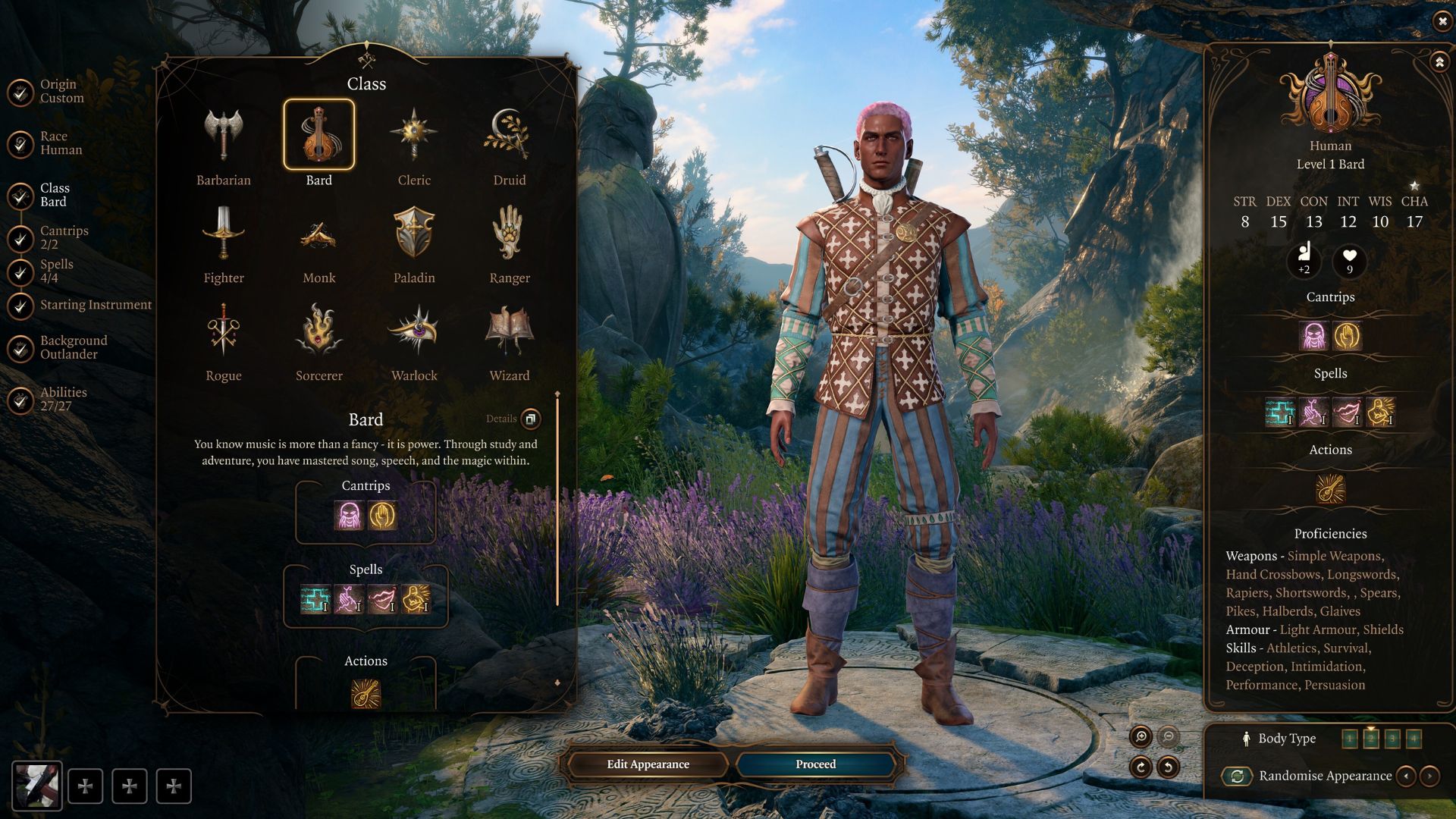
If you want the best of all the above classes, there’s only one choice to make, and that’s Bard. Improve your skills with Jack Of All Trades, so you can ace dialogue sections, pick locks, befriend animals and generally become competent at everything. Want more survivability than wizards, while still casting spells at full power? Check. Want to be great in close combat, proficient in most armors and shields, while buffing yourself and your allies? Check. When it comes to acing the whole game with a single class, Bards are nigh-on the only choice for the discerning powergamer.
Bards are full of options like wizards, with more HP, a wonderfully flavorful spell list, and plenty of martial combat options. Bardic Inspiration makes all of your other party members better, and spells like Charm Person and Detect Thoughts make the game’s social encounters a breeze to bypass. College of Lore Bards also get access to Magical Secrets, which allow you to crib from other classes’ spell lists. Hello, Fireball old friend. We’ve missed you.
However, for serious powergamers, the biggest boon is the Bard’s casting statistic, Charisma, to create powerful multiclass combinations. Deviating from Bard and taking a couple of levels of Paladin will benefit your healing spells and front-line potential; for example, you can use the College of Swords subclass in combination with the Paladin’s Divine Smite to hit very, very hard. Bard and Warlock also make for an excellent pairing: while both require high Charisma, you can use the spell slots from the Bard class to cast powerful Warlock spells more often.
For more RPG action, we've compiled all the best RPGs so you'll have some guidance on which games are worth playing after Baldur's Gate 3. However, it's also worth checking out the best MMO games or the best co-op games if you're looking for a more communal adventure.






